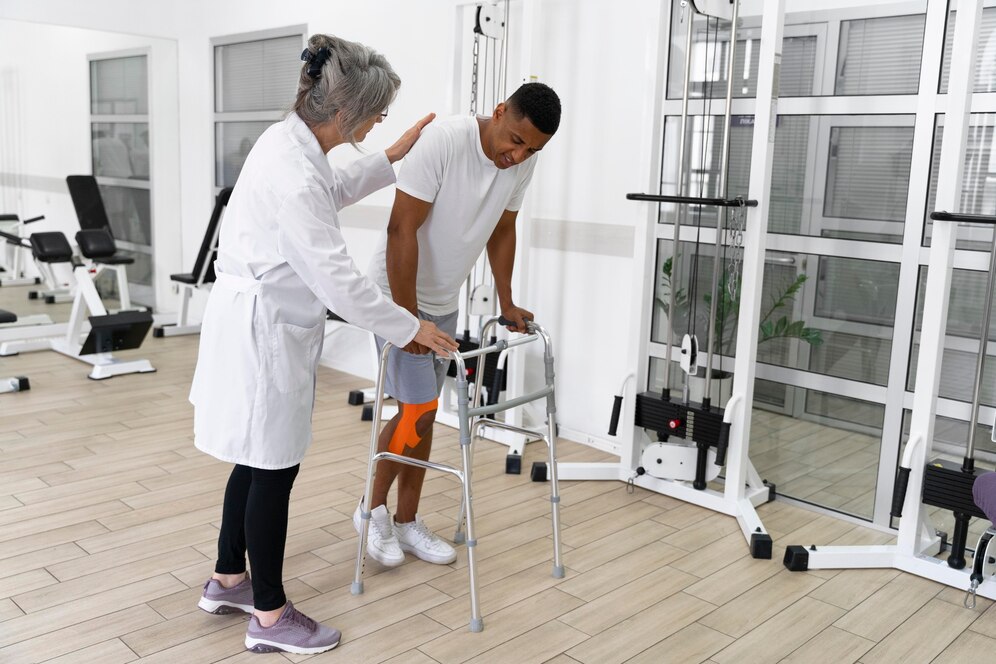Flat feet, also known as fallen arches or pes planus, affect a significant portion of the population. This common foot condition occurs when the arches of the feet do not fully develop or collapse, causing the soles of the feet to be in complete contact with the ground. While many individuals with flat feet do not experience any problems or pain, others endure discomfort, instability, and even debilitating pain.
Some individuals are born with flat feet, while others acquire it through age, injury, or wear and tear. Understanding the underlying causes of flat feet is crucial in identifying the best strategies and treatments to manage potential discomfort, prevent further complications, and enhance foot function. Furthermore, recognizing the signs of flat feet can help patients seek appropriate care and interventions when necessary. Common symptoms include foot swelling, arch or heel pain, foot fatigue, pronation (inward rolling) of the ankles, and difficulty standing on tiptoes.
In this article, we’ll discuss all about flat feet and provide solutions to enhance their overall foot health, function, and well-being.
Understanding Flat Feet and How Orthotics Can Help
Causes of Flat Feet
Flat feet can result from various factors, including genetics, age, and lifestyle habits. Understanding the potential causes can help determine the most appropriate treatment options. Some common causes of flat feet are:
- Heredity: Genetics play a significant role in the development of flat feet, meaning the condition can be passed down through family members.
- Age: As we age, the arch’s support system can weaken, causing the foot to flatten over time. This is more prevalent in older adults with joint conditions like arthritis.
- Obesity: Excess weight puts increased stress on the arches, leading to their potential collapse.
- Injuries: Foot or ankle injuries can damage the tendons and ligaments responsible for maintaining the arch’s structure, resulting in flat feet.
Identifying the underlying cause can help tailor a treatment plan to address the specific factors contributing to an individual’s flat feet.
Symptoms and Risks Associated with Flat Feet
While some people with flat feet may not experience any symptoms, others may suffer from a range of issues linked to this condition. Common symptoms and risks associated with flat feet include:
- Arch or Heel Pain: Flat feet can cause plantar fasciitis, an inflammation of the tissue connecting the heel bone to the toes.
- Foot Fatigue: Experiencing foot fatigue, aching, or discomfort is a common symptom of flat feet as the arches are unable to provide support and shock absorption.
- Shin Splints: The stress on the lower leg caused by flat feet may result in painful shin splits.
- Postural Imbalances: Flat feet can affect overall posture, increasing the risk of developing pain in the knees, hips, and lower back.
Not all individuals with flat feet will experience these symptoms, but understanding the potential risks can help those affected seek timely intervention and support.
Benefits of Custom Orthotics for Flat Feet
Orthotics, specifically customized to fit an individual’s foot structure and needs, can offer a variety of benefits for those with flat feet:
- Improved Support: Custom orthotics provide arch support by redistributing pressure across the foot and enabling proper weight distribution.
- Enhanced Comfort: Orthotics can alleviate pain and discomfort associated with flat feet, making activities like walking or standing for prolonged periods more comfortable.
- Corrected Biomechanics: Custom orthotics can help restore the foot’s alignment, improving gait and reducing the risk of developing other foot-related issues.
- Reduced Pain in Other Areas: By promoting proper alignment, orthotics can help alleviate pain in related areas such as the knees, hips, and lower back.
The Process of Creating Custom Orthotics at Park East Podiatry
Park East Podiatry prides itself on providing personalized orthotic solutions for patients with flat feet. The process includes:
- Comprehensive Evaluation: An experienced podiatrist will conduct a thorough assessment of your foot structure, gait, and overall health to determine if custom orthotics are the best solution.
- Foot Impressions: Using the latest technologies, the podiatrist will create a 3D digital representation or plaster mold of your feet, capturing all the necessary measurements and nuances of your foot structure.
- Orthotic Design: The impressions will be sent to a specialized lab to create orthotics tailored to your specific needs, using high-quality materials designed to ensure long-lasting support and comfort.
- Fitting and Follow-up: Once the custom orthotics are received, the podiatrist will ensure a proper fit and make any necessary adjustments. Regular follow-ups will help monitor progress and check for any signs of wear and tear, ensuring optimal support and function.
Conclusion
Flat feet, a common condition affecting numerous individuals, can lead to a variety of symptoms and risks if left unaddressed. Custom orthotics have proven to be an effective treatment option, offering improved support, enhanced comfort, corrected biomechanics, and reduced pain in other areas. Park East Podiatry specializes in creating these personalized orthotics, ensuring a comprehensive evaluation and focus on each patient’s unique needs.
If you experience discomfort or suspect you have flat feet, consider reaching out to Park East Podiatry to explore custom orthotics and other conservative treatment options. Schedule an appointment with our skilled orthotic specialists today and take the first step towards improved foot health, comfort, and functionality.

